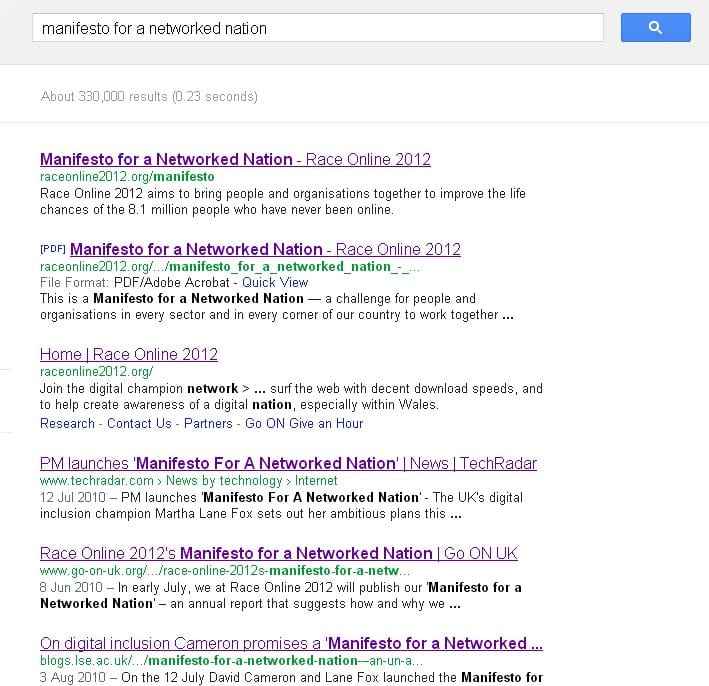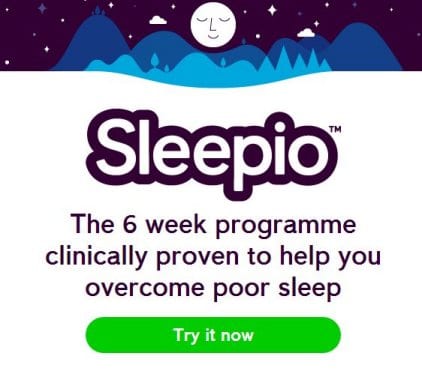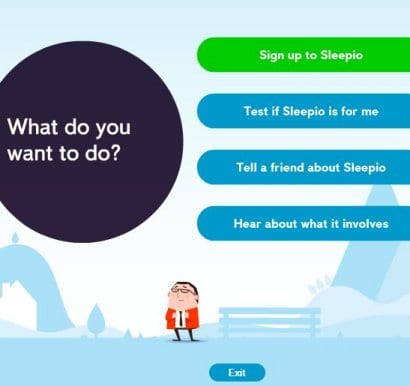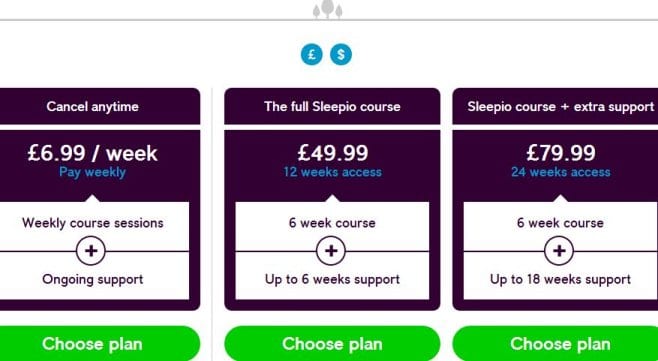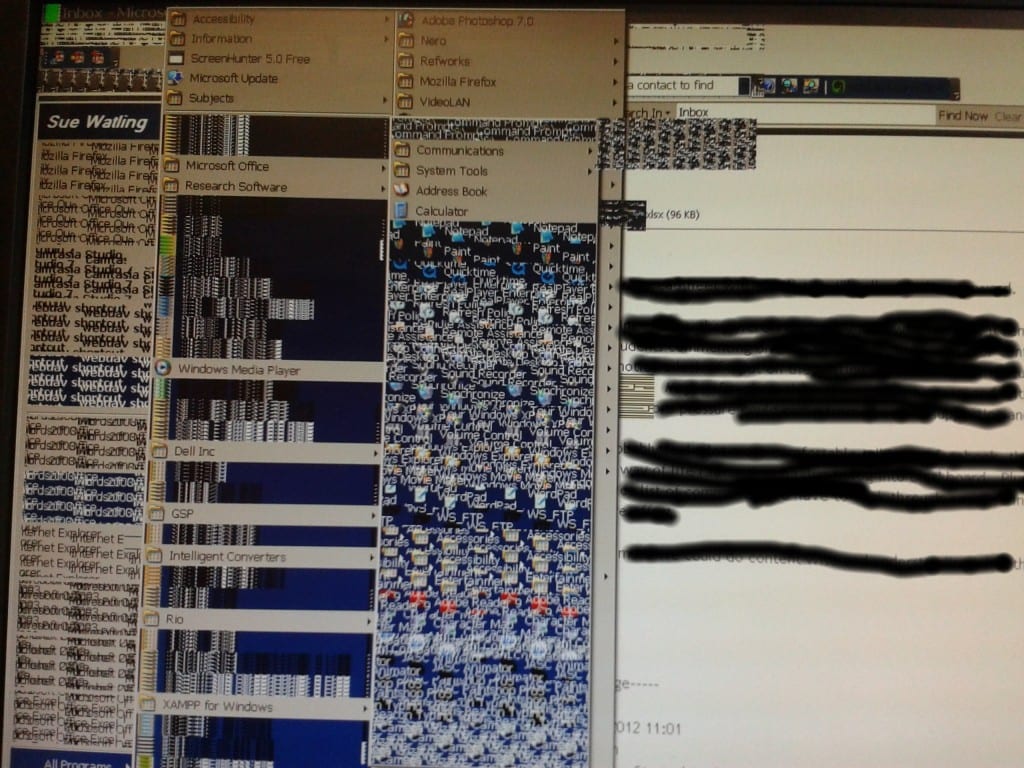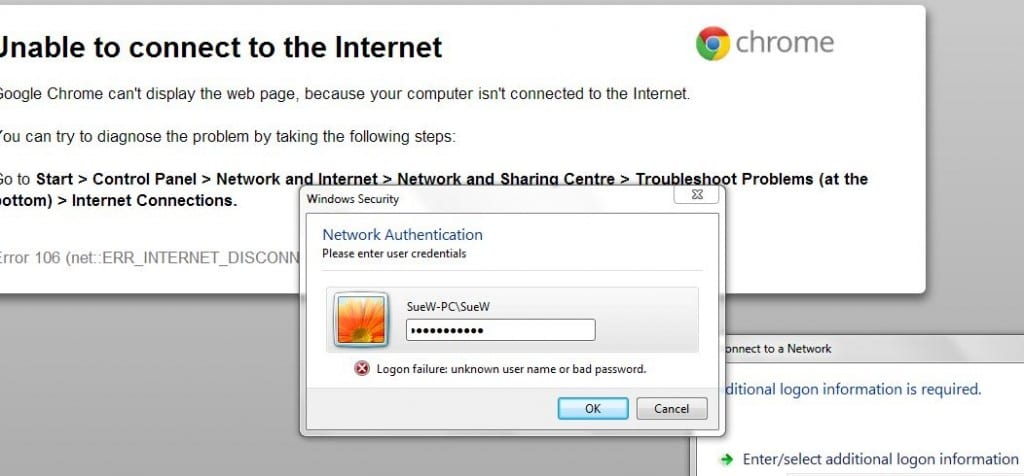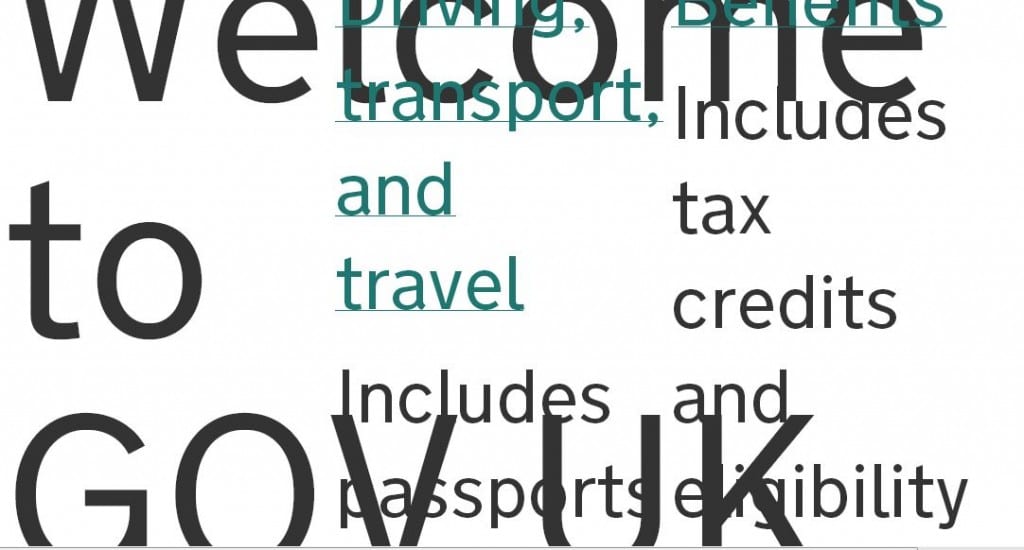I write about digital identity and the permanence of our digital footprints, but it seems the government has no problem in making digital content disappear. All links to the Government’s Manifesto for a Networked Nation are redirecting to Go On at http://www.go-on.co.uk/index.php
Go On is the replacement for the Race Online 2012 website, designed to champion digital inclusion, but none of the content has transferred across, including the Manifesto. This is unfortunate. It’s now difficult to find ‘official’ reference to those sectors of the population considered up until recently to be digitally excluded.
Early research data can be found in the Labour government’s Digital Britain reports; these can still be found in the national web archives. The Manifesto has vanished. It’s not the first time I’ve had problems revisiting content online. Last year a new report targeting ‘hard to reach’ sections of the population divided digital exclusion into three categories; young, old and those in between. It rightly identified cost and motivation as drivers but omitted disability or assistive technologies, which cut across all age ranges and constitute a major cause of exclusion from increasingly digital lifestyles. This ‘hard to reach’ document is currently living up to its name.
In George Orwell’s ‘1984’, Winston Smith is employed as a government bureaucrat tasked with rewriting history. What was true one day was changed the next, along with all references to the event. It’s not a fictional fancy to see how those with the relevant levels of access and controls could write the scripts which alter history at the click of a key. Now, if anyone can find a digital link to the manifesto….
